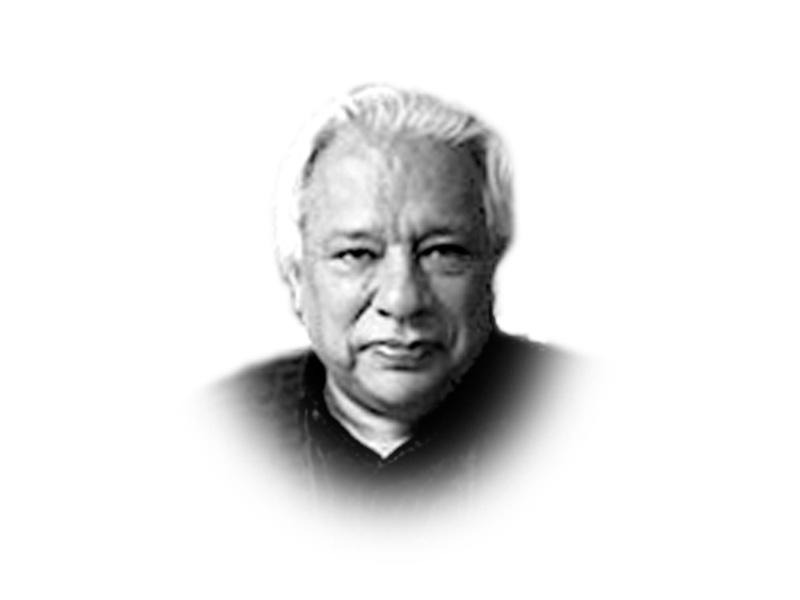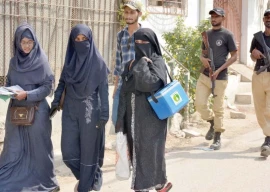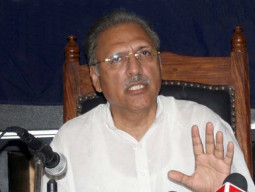
If the 2011 pre-census house count is to be believed, Karachi is the only place in Pakistan where household size has increased. This is not because of a rise in fertility rates but due to an absence of accommodation. The poor can only afford land on the fringe and living on the fringe has become more expensive than renting in the city because of the excessive cost and time involved in travelling, non-availability of jobs for women in the fringe, and the absence of schools and health facilities. A new dimension is the absence of security.
As a result of this, low-income settlements within or comparatively nearer to the city centre have densified to over 6,000 persons per hectare, making Karachi the third-most dense city in the world. These settlements suffer from severe overcrowding, with all its serious social and environmental negatives. Meanwhile, high-income settlements have ridiculously low densities of less than 200 persons per hectare. Despite these realities, there has been no public sector social housing in Karachi for the last two-and-a-half decades.
The city also floods but not because of climate change as some would have us believe. It floods because two of its main outfalls to the sea have been encroached upon by elite housing societies and one outfall by an expanding katchi abadi. The massive floods that affected Saadi Colony in 2013 were the result of officially approved encroachments on the natural drainage system by formal sector settlements. The floods will happen again.
The city is full of unlifted solid waste. Much of it is deposited in informal dumping sites near the creeks of the city, which they are polluting. A very large solid waste recycling sector, much of it informal, helps in taking care of over 30 per cent of the waste generated. No attempt has been made to integrate this informal sector into the city’s solid waste management system. Meanwhile, formal and informal developers pay the staff of civic agencies large sums of money to dump organic waste and debris to illegally reclaim land from the sea for development purposes. Also, contractors of waste pickers pay the KMC staff to not pick up solid waste from the neighbourhood kachra kundis so that salvageable material from them can be extracted and sent to the formal and informal recycling industry.
Karachi is perhaps, the only city in the world where the number of public transport buses has actually declined in the last 10 years. If it was not for the Qingqis and the rapidly increasing number of motorbikes, majority of Karachiites would not be able to get to work and back. However, there are no physically segregated lanes or parking spaces for motorbikes and there are also no pavements for pedestrians, even on the fast moving signal-free corridors. As a result of this, registered fatal accidents related to motorbikes and the absence of pavements and manned zebra crossings have increased by 39 per cent between 2008 and 2013. As a result of these conditions, women are the worst affected section of the population. Research shows that because of commuting related problems, many women do not work. Also, increasingly, their choice of a job is related to commuting convenience rather than their expertise or need.
The city has become physically ugly because of the countless haphazardly placed and low quality billboards. They dominate the cityscape and do not say much for the aesthetic sense and culture of our advertising and civic agencies. They obstruct pavements and road signs (where they exist) and trees are regularly cut down to facilitate them. They do not follow the bye-laws that have been developed for them and collapse in strong winds, causing injury and death. There are so many of them that a minibus driver commented, “Karachi has become a pimp for big business”. The cityscape is also dominated by a maze of electric and cable wires, which apart from being grotesque, are the cause of a large number of deaths even during very light rains.
Karachi’s most serious problem is livelihoods. The informal industrial activity in the low-income settlements on which a large section of Karachiites survive has shrunk since it cannot compete with Chinese imported goods. Technical and vocational education to produce skilled labour for potential industry and professions does not exist. In the absence of technicians and para-professionals, the numerous posh universities we are building are no better than castles built on sand.
Many development schemes for the city have been in limbo for over a decade. These include mass transit proposals and the S-III sewage disposal plan, in the absence of which, Karachi’s coastline and creeks are heavily polluted. Meanwhile, grand plans for the city’s densification and for speculative commercial and elite residential developments are being proposed and supported without a required environmental impact assessment or an urban design exercise.
The above issues can be tackled and overcome only through a sound system of local governance (irrespective of whether it is centralised or decentralised), even if sectarian and ethnic killings cannot be completely eliminated. In recent years, a lot of concerned young Karachiites and NGOs have initiated many programmes related to culture, education, health and awareness. This is a big positive. But, to overcome the Karachi crisis, they need to come together on a one-point agenda for the establishment of a local governance system in the larger interest of the city and the province of which it is the capital. Hopefully, as a result of such a system, a Karachiite will not die due to a building collapse, fire, an absence of medico-legal facilities and unaffordable health care. In addition, he/she will be able to get an NIC, a death and birth certificate, get his/her child admitted to a reasonable school and his/her mother to a hospital, get a friend or relative released from illegal police custody, and get to solve family and property related issues without paying a bribe or seeking patronage from religious or ethnic groups.
Published in The Express Tribune, October 3rd, 2014.
Like Opinion & Editorial on Facebook, follow @ETOpEd on Twitter to receive all updates on all our daily pieces.
COMMENTS (8)
Comments are moderated and generally will be posted if they are on-topic and not abusive.
For more information, please see our Comments FAQ

1722586547-0/Untitled-design-(73)1722586547-0-165x106.webp)


1732326457-0/prime-(1)1732326457-0-165x106.webp)












Karachi used to be the called the City of Lights, but the current unfortunate reality is the one depicted by the author. However, for obvious reasons, the author has decided to make this piece apolitical. Among other factors, Karachi's decline can also be attributed to the power struggle and violence between various political parties and ethnic groups. It will be difficult to reach compromise and achieve results unless we are honest in our discussion, no matter how uncomfortable it may be politically.
There are certain areas in Karachi that are lesser developed, have more load shedding, etc. because they voted for the "wrong" political party. The major party in Karachi, MQM, has developed its own sectors and units but ignored the others. The situation is akin to Gaza where certain groups are punished for their ethnicity.
It was the reps of Karachi, the mqm, on whose shoulder lied the responsibility to secure Karachi an appropriately empowered local government system for this city. The yragedy is that despite giving up thousands of lives over the last two decades, Karachiites have not earned this right. Every now and then a half hearted effort is started by mqm and then dies a death at the altar of some political expediency. Herein lies the tragedy of Karachi's misrepresentation.
What Arif Sahab has only hinted at is the need for consensus about the governance of Karachi. All political entities need to overcome their individual agendas and focus on addressing the problems confronting the city. The wellbeing of Pakistan is inextricably linked to the fortunes of Karachi and no ethnic group can claim the city anymore. There will be no hope of improvement without the political will to honestly address the city's problems. Either we see this together or Karachi will continue to sink into a medieval state.
The whole society is built upon the premise to subjugate others. While local self-government will dramatically improve the quality of life and put a stop to Karachi's decline, it will give rise to a fascist political structure dominated by one single party in Karachi. Yet, there does not seem to be a solution to Karachi's problems other than what the Author has proposed.
Should we not conclude that present system has failed miserably to deliver and requires total overhaul? However, the beneficiaries of this system wouldn't accept any changes.
thanks for noticing and sharing
Thanks for sharing. A properly functioning Local governance system is critically needed not only in karachi but the whole of Pakistan. The civil society should apply pressure on the provincial and central governments to expedite its implementation.
DHA City and Bahria Town rapidly rising in the north, while DHA expands in the south. The poor stuck in the middle, while signal free corridors and expressways connect elite localities. What the upper middle class asks for is more gated communities. They don't care if their maid has to travel 2 hours each way to come from Surjani Town. The poor should just move out of sight and keep the DHAs poor-free.